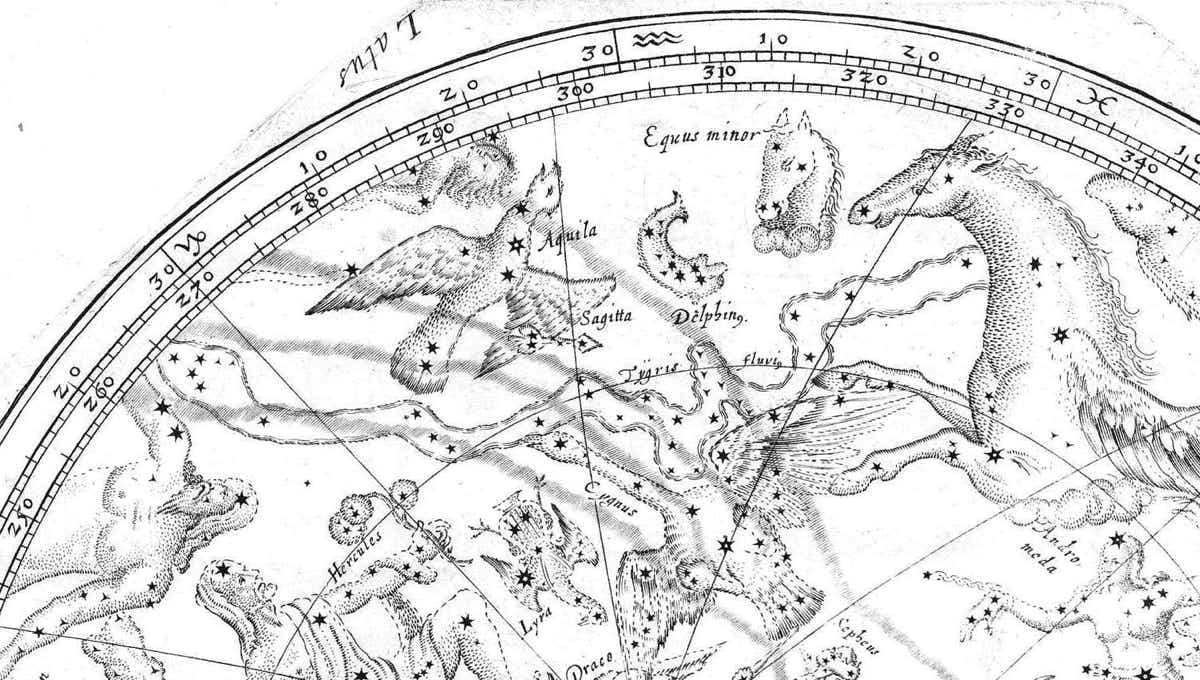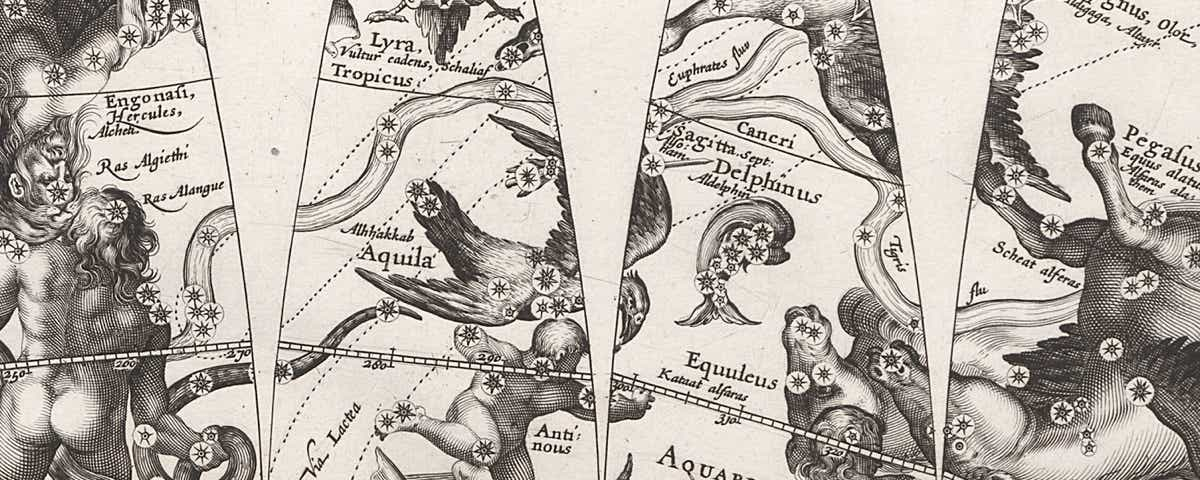
A constellation representing the river Tigris, a real river of Mesopotamia which joins with the Euphrates in the modern Iraq. The constellation was introduced in 1612 by the Dutchman Petrus Plancius on the same globe that the river Jordan (Jordanus) made its first appearance.
The celestial Tigris began at the neck of Pegasus and flowed between Cygnus and Aquila, an area now occupied by Johannes Hevelius’s later invention Vulpecula. It ended by the right shoulder of Ophiuchus in a V-shaped group of stars that Ptolemy had listed as lying outside Ophiuchus; these were later to be incorporated in another short-lived constellation, Taurus Poniatovii.
Like Jordanus, Tigris first appeared in print on the 1624 chart by Jacob Bartsch and as a result Bartsch was sometimes wrongly credited with its formation. Also like Jordanus, it was not adopted by Hevelius for his influential atlas of 1687. Both constellations became forgotten during the 18th century and were not shown by Johann Bode on his Uranographia atlas of 1801.
Tigris running from the neck of Pegasus, at right, to the shoulder of Ophiuchus at left, as seen on a planisphere from the 1666 edition of Planiglobium coeleste et terrestre by Isaac Habrecht II.
© Ian Ridpath. All rights reserved
Tigris meanders from the chest of Pegasus, at right, to the shoulder of Ophiuchus at left on a series of gores for the 1612 celestial globe by Petrus Plancius and the Dutch engraver and cartographer Pieter van den Keere (Petrus Kaerius) (1571–c.1646). On this depiction the Tigris is joined under the neck of Cygnus (third gore from left) by a tributary named the Euphrates, although in reality the Euphrates is the larger of the two rivers. Being on a globe, the constellations are drawn in reverse from the way they appear in the sky.




